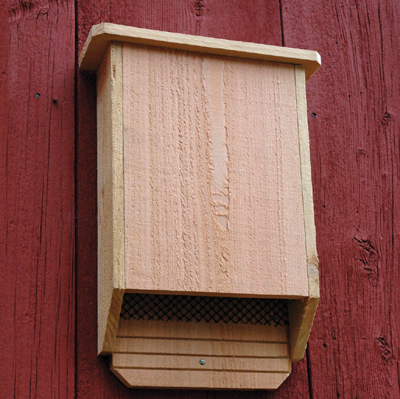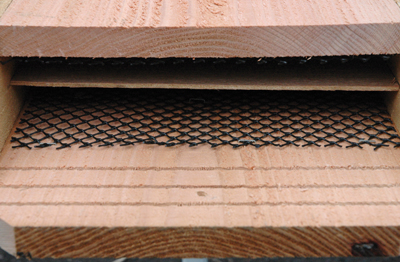BAT CONDO
in natural cedar
All species of American Bats
live on thousands of insects they eat after dusk. Since they love mosquitoes,
they're good to have around your home and it's fun to watch their acrobatics
at dusk on summer evenings.
Groups of bats, sometimes 50 or more, roost together during daytime hours.
they like to crawl into snug crevices about 3/4" to 1" wide. (We've even
had them roost behind the vinyl shutters at our store in Point Pleasant,
PA.)
Our Bat House Condo was designed for Bat appeal. 18" high x 10 3/4"
wide x 3 1/2" front to back. Center divider creates two 1" compartments,
lined on one side with 1/4" square plastic mesh for bats to cling onto.
Made in our Tillamook, Oregon warehouse from untreated natural Western
Red Cedar.
|

Site Bat Condos high on walls
or on 15 ft tall 4 x 4 posts with an open flyaway from trees. Bats like
it warm inside, so full sun exposure facing south is preferred.

|